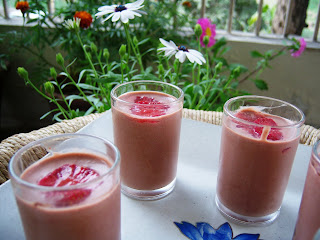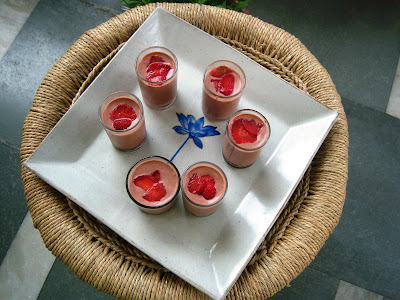
I remember having this snack in my childhood, both at home and other people's homes. They seem to have taken a backseat with the introduction of packaged snacks, so much so I haven't seen them even on occasions like Diwali (why would I, when there are pre packaged hampers of Kurkure available! *roll eyes*). I used to especially like the sweet diamond cuts which is made by lightly dipping the fried pieces into a sugar syrup. Growing up in Mumbai, while we called them diamond cuts, they are called Shankarpale in Marathi and we used to gorge on them during Diwali.
So, when I had some kids coming over for a playdate, I thought of making these for them - lest they never know that something like this existed. Of course, the wuz that I am, couldn't think of deep frying them as per the traditional recipe and so I looked for a recipe where I could bake them. I found a simple recipe from one of my favourite chefs - Sanjeev Kapoor.
This one is made out of half whole wheat flour and half refined flour - not sure if that is the reason why the diamond cuts didn't puff up the way they usually do. I don't think its to do with the fact that they were baked instead of deep fried, so maybe next time I will experiment with the ratio of flours. Or maybe chill them the way you do for pastry dough.
The crackers were fine though - a nice, savoury snack which the kids and moms both enjoyed - crisp and light. My daughter really liked it so I will definitely be making them again. The flavour of the carom seeds was subtle but brought back some great memories. We had the crackers with a dip and paired it with some gooey chocolate brownies (which I will post later).
3/4 cup whole wheat flour (atta)
3/4 cup refined flour (maida)
3/4 tsp baking powder
1/3 cup ghee
salt to taste (1/2 tsp was enough for me)
Ajwain/omam (carom seeds)
1/2 cup chilled water
1. In a medium sized bowl, mix the refined flour and the whole wheat flour with the baking powder and salt.
2. Add the ghee and mix together till it resembled bread crumbs.
3. Add the carom seeds and then knead into a dough adding just as much water as is needed to make it pliable but not sticky or soft.
4. Cover with a cloth and keep aside for about half an hour.
5. Pre heat oven to 180 C. Divide the dough into 4 equal parts and roll out thinly on a lightly floured surface. I rolled it out to a little thicker than a roti (about 1/8th of an inch).
6. Prick all over with a fork; with a sharp knife or pastry cutter make diagonal lines at equal intervals on the rolled out dough and then once again cut again crosswise to give diamond shapes.
7. Place in batches on a lightly greased tray and bake for 15-16 minutes at 180C, checking to see that it doesn't over brown. Cool and store in air tight containers.







